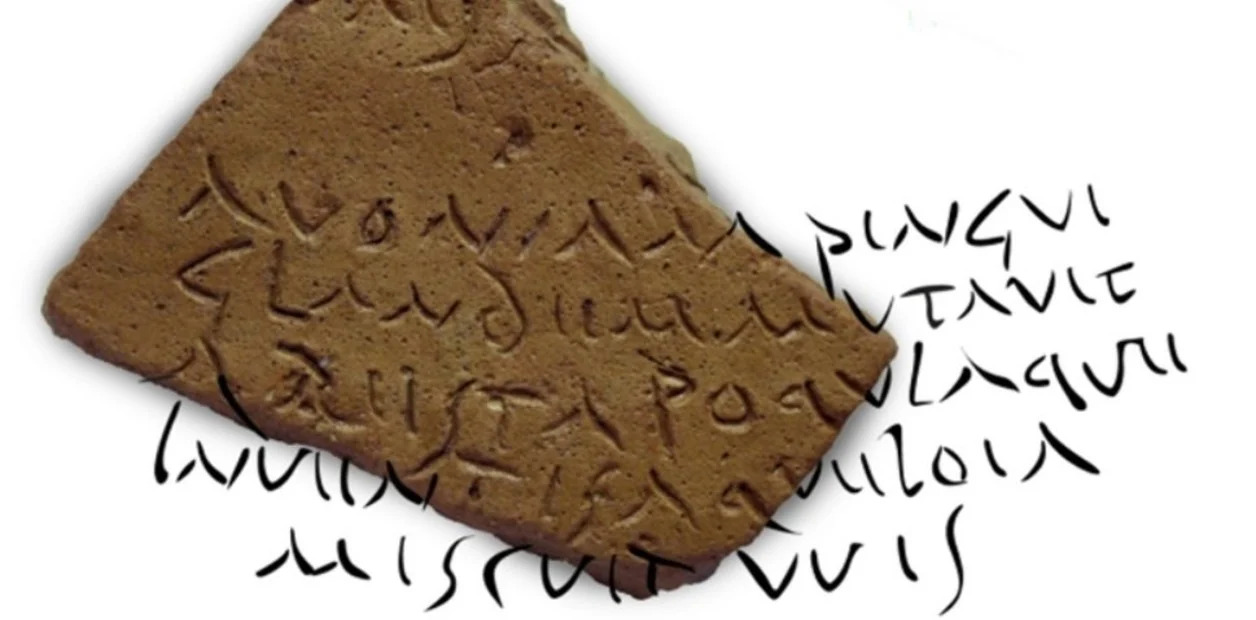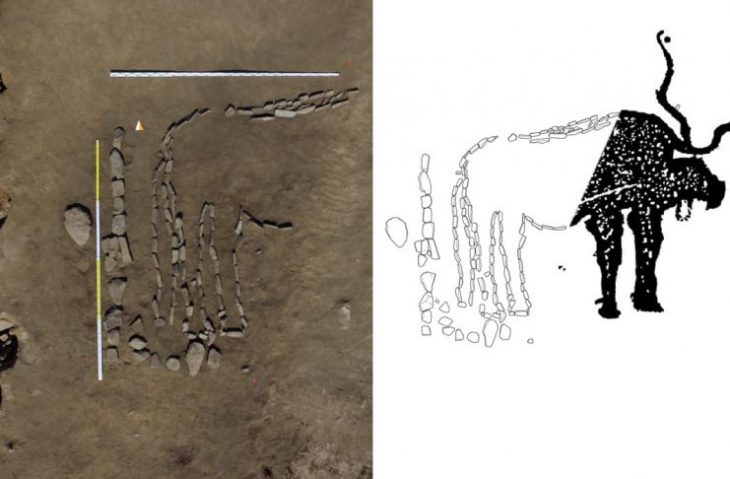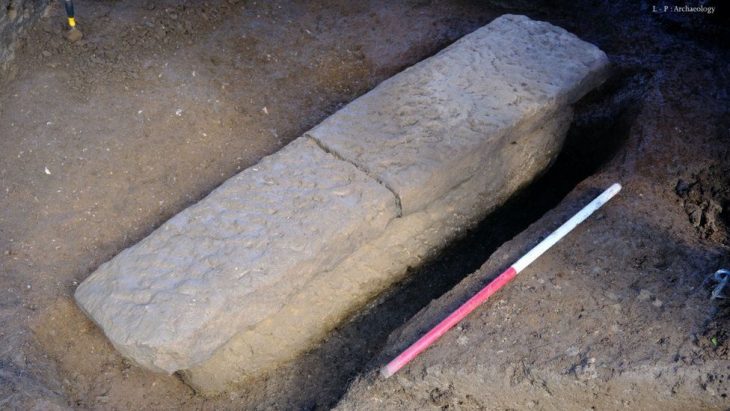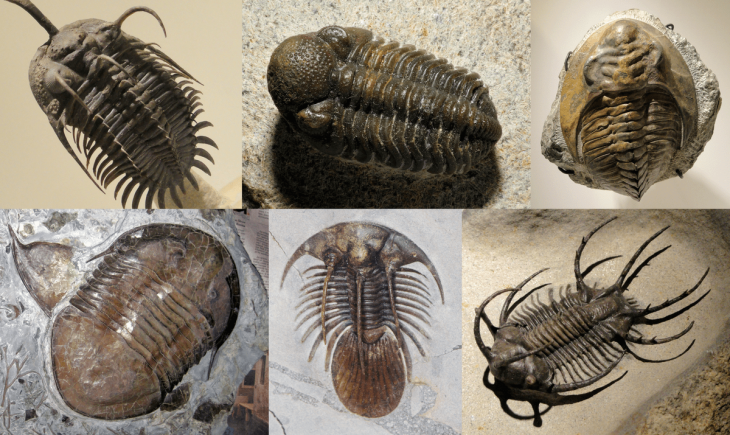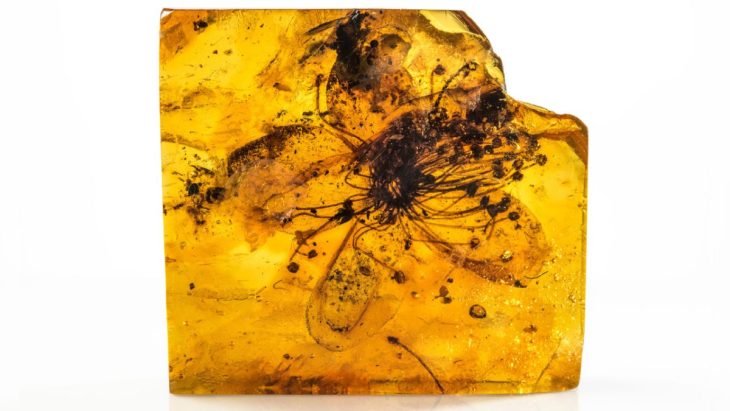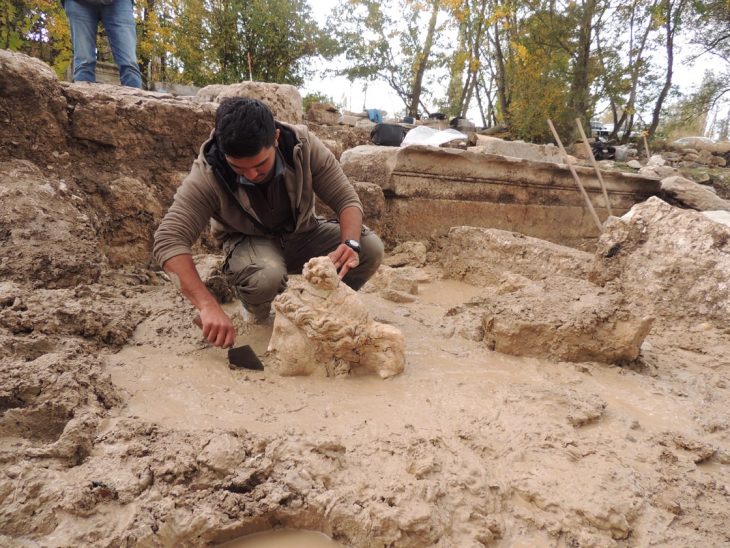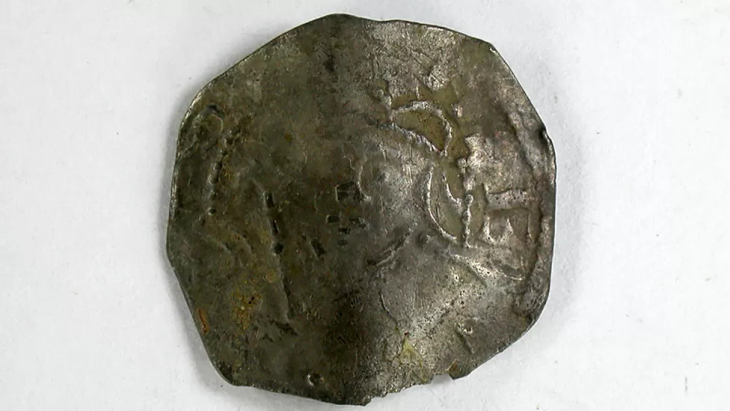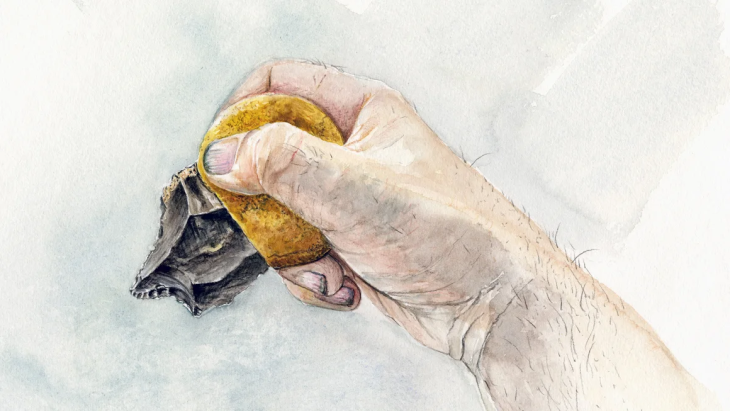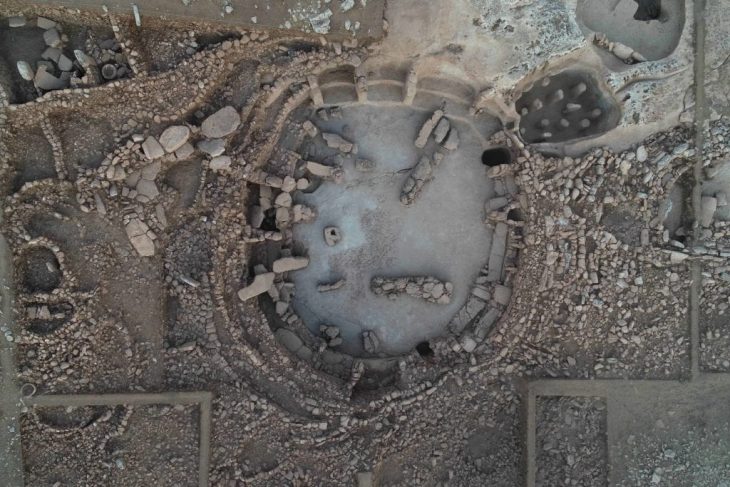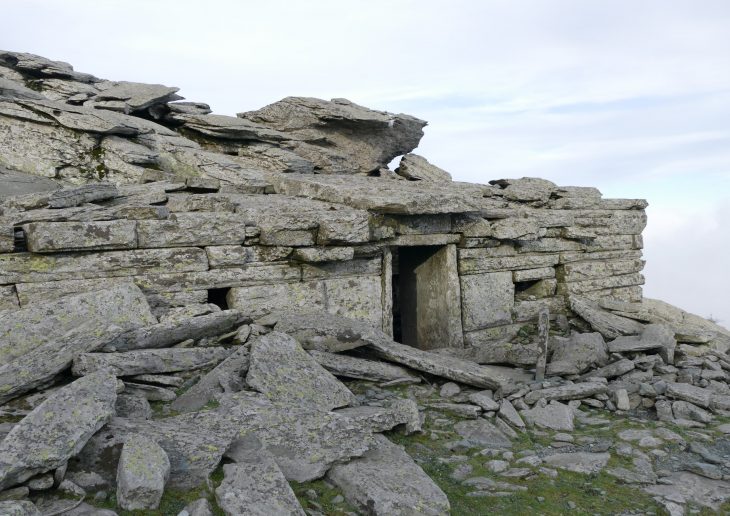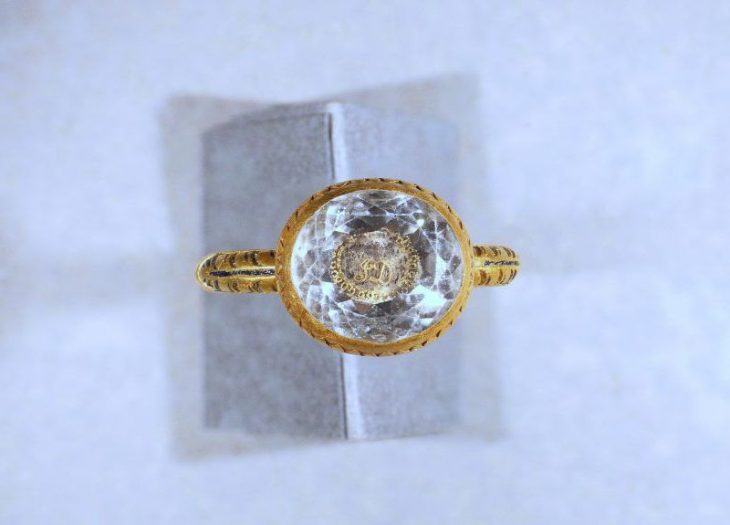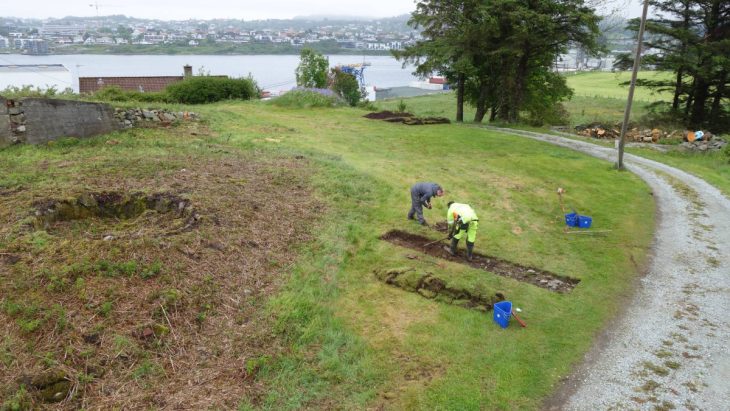Archaeologists have deciphered a verse by Virgil, the greatest poet of Rome’s Golden Age, carved into the clay of a small piece of a Roman jar. Experts call the discovery “exceptional” because it is the first time verses from the poet with whom children learned to read have been discovered in a commercial container.
The fragment was discovered by members of OLEASTRO, a collaboration between the Universities of Cordoba, Seville, and Montpellier while prospecting in the municipality of Hornachuelos (Córdoba). It is a fragment of an oil amphora from the Roman province of Betica that was made around 1,800 years ago and has a written text on it.
While the ceramic vessels were routinely engraved with information relating to producers, quantities and taxes, the 6cm by 8cm shard appeared to contain an unusual amount of text.
It was hardly shocking to find a piece of an amphora in an area like the plain of the Guadalquivir River, considered one of the nerve centers of olive oil production and trade throughout the Empire.
In the surroundings of Corduba, modern-day Cordoba, a good part of the olive oil consumed by Rome was produced and packaged, as evidenced, for example, by the remnants of amphorae with “Betica” seals preserved on Mount Testaccio.
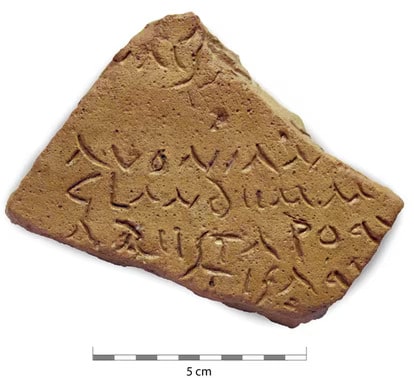
The epigraphic richness of the oleary amphorae of Baetica is well known since ancient times since it is known that Roman potters engraved their seals on them or wrote labels (tituli picti) with names of people, dates, or places, but never poems.
As a result, the fragment of an amphora with text on it appeared to be just another piece with no special significance at first. However, everything changed when the epigraph was deciphered, revealing the following words: S vais avoniam glandemm arestapoqv tisaqv it
Through overlaying, the researchers were able to infer that the text corresponds to the seventh and eighth verses of the first book of The Georgics, a poem by Virgil dedicated to agriculture and life in the countryside, written in 29 BC, which say,
Auoniam[pingui]glandem m[utauit]aresta, poq[ulaque][inuen]tisAqu[eloia][miscu]it [uuis]C[ambió] la bellota aonia por la espiga [fértil] [y mezcl]óel ag[ua] [con la uva descubierta]
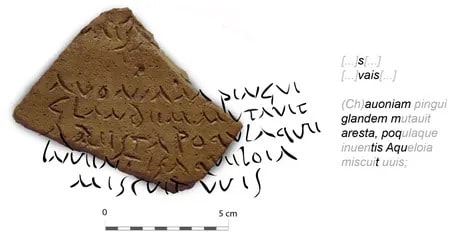
The researchers’ key theory, as published in the Journal of Roman Archeology, is that the verses, written on the lower part of the amphora, were never really intended to be seen.
They believe the author may have been a skilled labourer or perhaps even a child worker at the factory where the amphora was manufactured. In any case, the lines make it clear that whoever scratched the letters into the clay was more educated than such workers are traditionally supposed to have been.
The greatest poet of the Golden Age of Rome, Publius Virgilius Maro—Virgil—was born in 70 B.C. and died in 19 B.C. Virgil is one of the true immortals, a poet who was read in antiquity and has been read ever since. He is best known for his great epic the Aeneid, the story of Aeneas, the founder of Rome.
Virgil’s texts were used for children to learn to read in schools.”
Virgil was the most popular poet of his time. The Aeneid was taught in schools and its verses were a pedagogical exercise for many generations. Therefore, it is common to find them in remains of ceramic construction materials, which has led many authors to relate them to educational functions (Roman schoolchildren wrote Virgil on their blackboards). But why in an amphora? And why The Georgics and not The Aeneid?
In any case, the verses on the amphora from Hornachuelos/Fuente Palmera make it a unique piece posing many more questions in need of answers.
Experts believe that the author was doing a memory exercise or wanted to teach a child to read.

